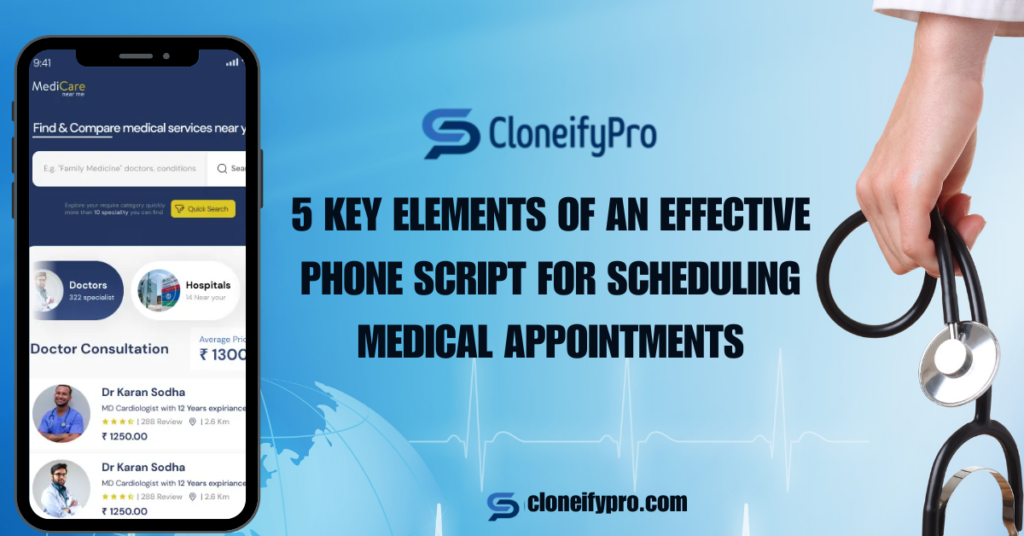
In the healthcare industry, efficient and accurate appointment scheduling is crucial for providing quality patient care. A well-structured phone script can help streamline the process, reduce scheduling errors, and enhance patient satisfaction. With advancements in Hospital Appointment Scheduling Software, integrating a strong script can improve communication and efficiency.
This article outlines the five key elements of an effective phone script to optimize medical appointment scheduling.
The first few seconds of a call set the tone for the patient’s experience. A polite and professional greeting ensures the caller feels welcomed and valued.
“Good [morning/afternoon], thank you for calling [Clinic/Hospital Name]. My name is [Your Name]. How may I assist you today?”
To streamline scheduling, it is essential to collect accurate patient details at the beginning of the call. Using Doctor Appointment Scheduling Software helps in verifying and updating records quickly.
“May I have your full name and date of birth to locate your records? Also, could you briefly describe the reason for your visit so we can schedule the appropriate appointment?”
Once patient details are recorded, offer multiple appointment options based on availability. Hospital Appointment Scheduling Software allows for real-time scheduling, minimizing double bookings.
“We have an available appointment with Dr. [Doctor’s Name] on [Date] at [Time]. Would that work for you, or would you prefer another option?”
Confirming appointment details helps prevent misunderstandings and reduces no-shows. Utilize Doctor Appointment Scheduling Software to send automated confirmations via SMS or email.
“To confirm, you have an appointment with Dr. [Doctor’s Name] on [Date] at [Time]. You will receive a confirmation message shortly. If you need to reschedule, please call us at least 24 hours in advance.”
A positive closing leaves a lasting impression and reassures the patient about their appointment.
“Thank you for choosing [Clinic/Hospital Name]. We look forward to seeing you on [Date]. Have a great day!”
An effective phone script ensures smooth and efficient appointment scheduling, improving patient experience and reducing errors. With the help of Doctor Appointment booking Software and , healthcare facilities can enhance their scheduling processes and patient communication.
By implementing these five key elements, medical offices can create a seamless and professional appointment scheduling experience, ultimately leading to better patient care and operational efficiency.